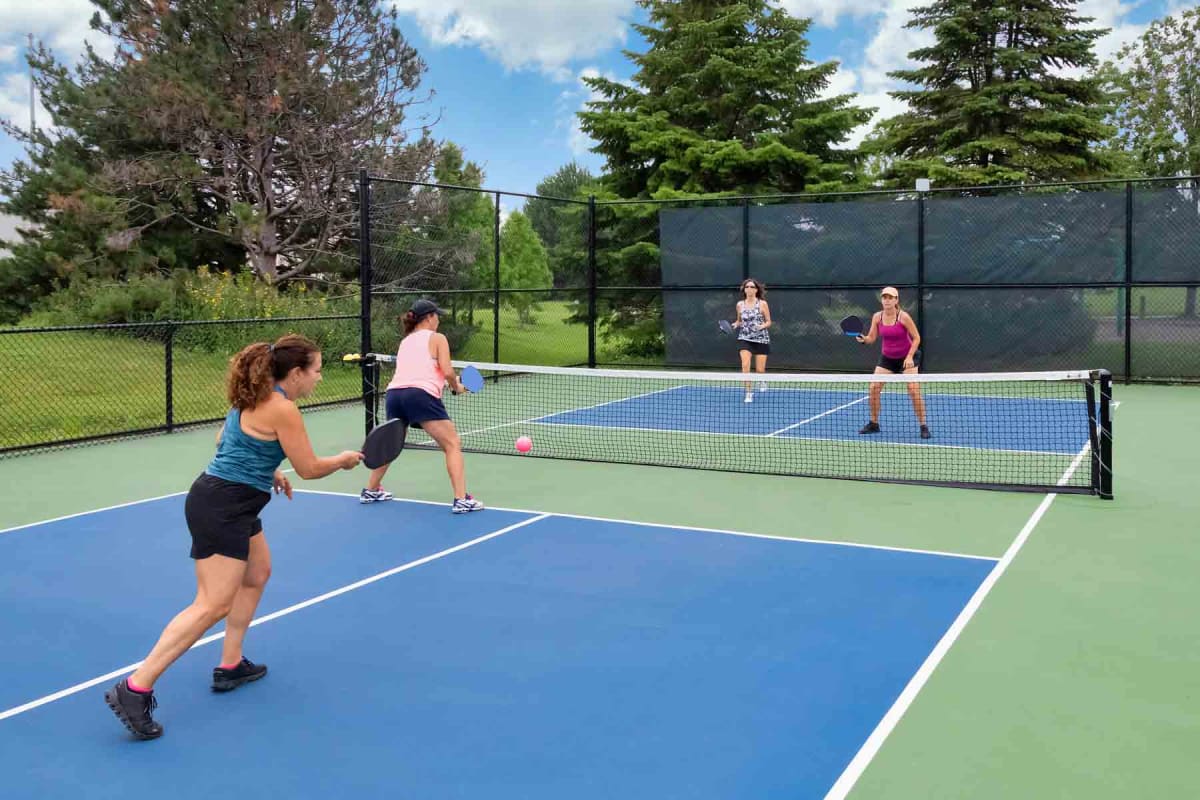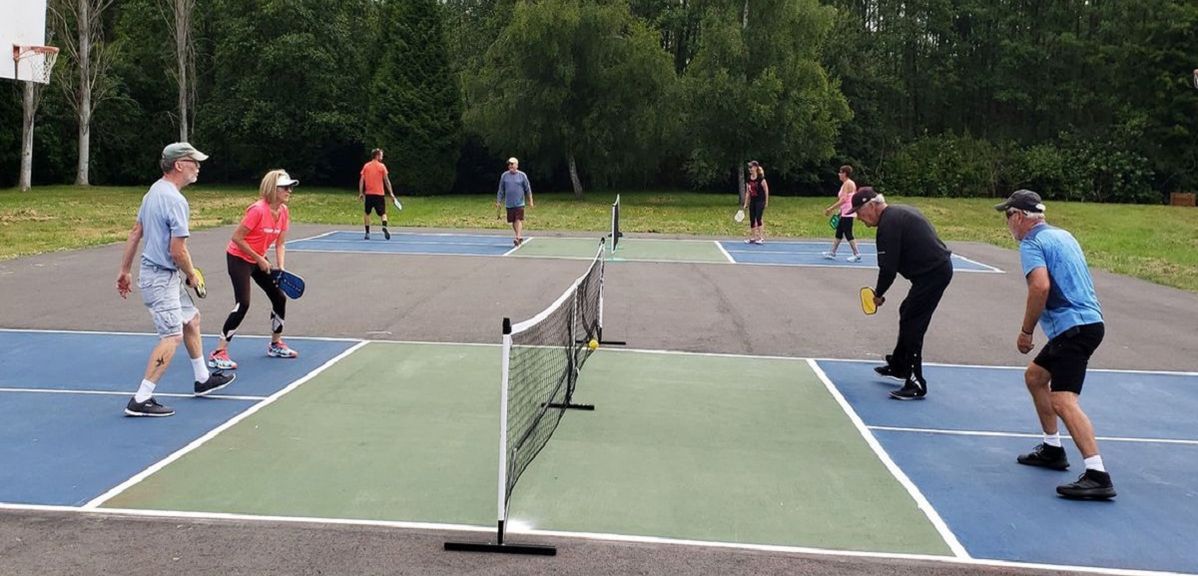Navigating Rules for Pickleball Court Construction in Your Area
Creating a pickleball court in your location requires a nuanced understanding of various regional laws, consisting of zoning legislations, building licenses, and safety requirements. Each town imposes specific standards that can significantly influence the usefulness of your job. Engaging with local authorities and the area is vital for guaranteeing compliance and cultivating support. Nonetheless, browsing this regulative landscape can be complicated and lengthy. What are the key actions you should take into consideration to avoid prospective challenges and make certain a smooth building and construction process?
Understanding Regional Zoning Laws
When thinking about the building and construction of a pickleball court, recognizing regional zoning regulations is essential to ensuring conformity and preventing potential legal problems. Zoning laws determine how land can be made use of and commonly consist of requirements pertaining to recreational facilities. These legislations can differ considerably by municipality, influencing variables such as court positioning, lighting, size, and sound degrees.
Before initiating building and construction, it is crucial to consult the neighborhood zoning board or planning division to determine the details policies that relate to your home. Particular areas might limit leisure activities, while others might call for certain licenses or adherence to specific standards. It is likewise vital to consider obstacles, which figure out exactly how far frameworks have to be from residential property lines or various other structures.
In addition, personal advancements, such as home owner organizations (HOAs), might impose their own policies relating to the building and construction and use pickleball courts. Understanding these laws can prevent pricey modifications or lawsuits down the line. Involving with regional stakeholders and area members can give beneficial insights and foster assistance for your project, guaranteeing that it straightens with the area's demands and assumptions.
Obtaining Necessary Structure Permits
How does one navigate the complexities of obtaining required structure licenses for a pickleball court? Commonly, you will certainly require to send a comprehensive website strategy that describes the proposed court measurements, products, and layout.

When authorizations are gotten, it is essential to follow any kind of examination routines and demands throughout the construction phase. Maintaining interaction with regional authorities will help with a smoother approval procedure and help stay clear of potential troubles. By completely preparing and comprehending the permitting landscape, you can efficiently navigate the complexities entailed in building a pickleball court while staying certified with all regional regulations.

Assessing Environmental Effect
An extensive evaluation of ecological influence is important when planning the building and construction of a pickleball court. This analysis assists recognize potential effects on local environments, water sources, and neighborhood looks. Trick aspects to take into consideration include website option-- making certain that the court is not improved ecologically delicate land, such as wetlands or environments for threatened varieties
Dirt stability and water drainage patterns need to be analyzed to prevent disintegration and water merging, which could negatively affect bordering vegetation and wildlife. In addition, the option of materials is vital; selecting eco-friendly and sustainable choices reduces environmental harm.
The execution of effective stormwater management techniques is another important aspect, as it aids alleviate drainage and sedimentation. Involving with neighborhood ecological agencies can provide beneficial insights into regulations and best practices particular to your area.
Finally, community input can be beneficial in recognizing any type of regional ecological problems and promoting support for the job. By conducting a thorough ecological effect evaluation, stakeholders can guarantee that pickleball court building aligns with sustainable techniques and adds positively to the area's eco-friendly health and wellness.
Adhering To Safety And Security Specifications
Guaranteeing conformity with security standards is essential for the successful building and operation of a pickleball court. Abiding by well established safety and security policies minimizes the threat of crashes and injuries, making sure a safe atmosphere for players.
Key security requirements consist of correct court measurements, surface area materials, and illumination needs. The court must fulfill the official measurements of 20 feet large by 44 feet long for increases play, with suitable buffer zones to avoid injuries from errant spheres. Pickleball court construction. The surface needs to be built from over at this website non-slip products to boost grip and minimize the chance of falls
Additionally, lighting should suffice for evening play, giving consistent illumination to prevent darkness that can prevent exposure. Neighborhood building codes might additionally determine details requirements for fencing and internet height to ensure player security and avoid unapproved access to the court area.
Regular examinations and maintenance are vital to maintain these criteria over time. By prioritizing safety compliance, court proprietors not just safeguard gamers yet likewise promote a favorable reputation within the community. This dedication to safety can encourage higher participation and pleasure of the sport, ultimately contributing to its growth and sustainability.

Involving the Area in Preparation
Community involvement in the preparation stages of pickleball court construction can significantly enhance the task's total success. Engaging local homeowners and stakeholders promotes a feeling of ownership and encourages collaborative decision-making, which can cause broader assistance for the initiative.
To properly include the neighborhood, organizers must initiate public conferences or workshops, giving a platform for citizens to voice their Going Here viewpoints and choices regarding location, design, and facilities. Studies and comments forms can likewise be made use of to collect insights from a larger audience, guaranteeing that diverse point of views are considered.
Furthermore, creating a community advisory board can help with ongoing conversations and address issues throughout the preparation procedure. This board can consist of representatives from different demographics, such as local schools, recreational organizations, and neighborhood watch, thus magnifying community depiction.
Effective communication is key; updates regarding the task must be routinely shared by means of e-newsletters, social networks, or regional publications. By focusing on community engagement, organizers can cultivate enthusiasm, alleviate potential resistance, and develop a pickleball facility that really resonates with neighborhood worths and requirements. This collaborative method not only enhances the task yet also enhances neighborhood ties.
Verdict
In final thought, navigating the complexities of pickleball court building requires an extensive understanding of regional guidelines, including zoning legislations, structure licenses, and security requirements. Performing check it out environmental evaluations is important to reduce ecological effect, while neighborhood involvement can enhance assistance for such jobs. By sticking to these guidelines and fostering partnership, successful application of pickleball courts can be achieved, promoting leisure opportunities and area health. Continued persistance in these areas will guarantee lasting and compliant development.
Building a pickleball court in your location calls for a nuanced understanding of various neighborhood laws, including zoning legislations, structure permits, and safety and security requirements.When considering the building and construction of a pickleball court, understanding regional zoning regulations is critical to making certain compliance and preventing potential lawful issues. By thoroughly preparing and comprehending the allowing landscape, you can efficiently navigate the intricacies involved in creating a pickleball court while continuing to be compliant with all local regulations.
In verdict, navigating the intricacies of pickleball court building and construction demands a comprehensive understanding of neighborhood policies, consisting of zoning regulations, building licenses, and safety and security standards. By adhering to these guidelines and promoting collaboration, successful execution of pickleball courts can be accomplished, advertising entertainment opportunities and neighborhood health.